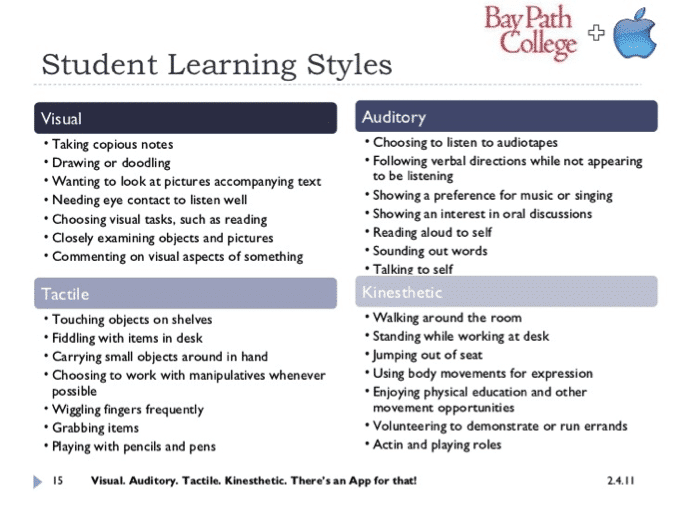I hear and I forget. I see and I remember. I do and I understand. – Confucius
In the early 1980s, developmental psychologist and educational researcher Howard Gardner verified what so many people intuitively knew: different children learn in different ways. His research led him to publish Frames of Mind: The Theory of Multiple Intelligences in 1983, which shows how children learn better in school when their individual learning styles are recognized and supported. He outlined seven different learning styles: auditory, visual, kinesthetic, interpersonal, intrapersonal, linguistic and logical-mathematical.
While there are various studies published about different types of learning styles, one thing is clear. Nobody disagrees that people learn in different ways. Below is one example of how learning styles are explained.

The Case for the 21st Century Classroom Gets Stronger with Each Study
What every learning style study makes clear is that there are multiple styles of learning and individuals at different times in different situations have different styles. Nobody’s learning style is fixed, even if they have a dominant style of learning. Yet our traditional classrooms still favor visual and auditory learners. However, the active classroom, according to various studies—including one by the Cornell University Center for Teaching Excellence—“addresses different student learning styles”. It is yet one more reason in mounting evidence about the benefits of the collaborative 21st century classroom to move towards this model.
How a 21st Century Classroom Addresses All Learning Styles for Better Student Outcomes
Creating a 21st Century Classroom environment that promotes collaborative learning can:
- Reduce drop-off in concentration. Active learning promotes recall and deeper understanding of material, as students are engaging with the content rather than simply listening to it.
- Keep all students moving forward. Studies have shown that lower-performing students receive greater benefits from active learning than students who are already achieving high grades.
- Support all learning styles. There are clear ethical benefits to the use of active learning techniques.
Back to Insights








